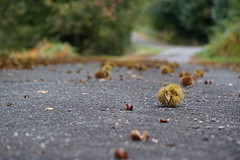Silas Deane House
Tracy Lee Carroll

Has been designated a
Registered National
Historic Landmark
Under the provisions of the
Historic Sites Act of August 21, 1935.
This site possesses exceptional value
in the commemorating or illustrating
the History of the United States.
U.S. Department of the Interior
National Park Service
1973
In 1762, Silas Deane came to Wethersfield to teach and study law. He met Mehitable Webb, Joseph's widow, and became her legal and business advisor. They married in 1763, and had one son, Jesse, in 1764. Having ìarrivedî socially, Silas' constructed his own mansion, conveniently next door to his Webb stepfamily. The new house was very different from the rest of Wethersfield architecture, more closely resembling dwellings from the Dutch West Indies or New York, with an asymmetrical facade probably featuring a piazza, or porch. The door opened onto a spacious hallway with a grand staircase, and the best parlor contained a carved Portland brownstone fireplace. Although the piazza is gone, the staircase and fireplace remain to this day.
The Deane House was completed about 1766. Mehitable had little time to enjoy it, however, for she died in 1767. In 1769 Silas married another rich widow, Elizabeth Saltonstall Evards from New London. In 1774 Silas Deane served in the first Continental Congress, and while he was there John Adams visited Wethersfield and took tea with Mrs. Deane. In 1775 George Washington dined with Elizabeth en route to take command of the troops outside of Boston. Silas went to France in 1776 on a secret mission to secure troops, arms, and supplies for the revolutionary cause.
While he was in Paris Elizabeth Deane died, and that misfortune was compounded by accusations of mismanagement of government funds. Silas was abruptly recalled by Congress but never given a hearing to exonerate himself. Having spent his fortune in an attempt to clear his name, he sent instructions to his brother Barnabas in Wethersfield to sell all his furniture. Disillusioned and impoverished, he stayed in Europe in self-imposed exile, but in 1789 decided to return to Canada to rebuild his fortune. On board ship on the night before his departure, he died mysteriously, and is buried in England.
Stephen Chester bought the Deane House from Silas' creditors sometime after 1790. From 1800-1873 it passed through many hands until it was bought by Frances Talcott Fenn in 1874. Her son, U.S. Representative E. Hart Fenn inherited the house in 1899. Mr. Fenn and his second wife Margaret were active in the early preservation movement, and made few structural changes to the building, even going so far as to install the only bathtub in the basement! However, the house was severely damaged by fire in 1932, and the extent of the loss is unknown.
Mrs. Fenn was a Connecticut Colonial Dame, and after she inherited the Deane House in 1939 she secretly made plans to turn it over to the Society after her own death. Her gift was a very welcome surprise in 1959, completing the Museum complex of the three adjacent houses. From 1960-1974 the Colonial Dames worked assiduously on the house's restoration, and in 1964 the house was declared a National Historic Landmark. When it opened to the public in 1974, it was recognized as one of the most careful and accurate restorations undertaken in the United States.
View Project:




